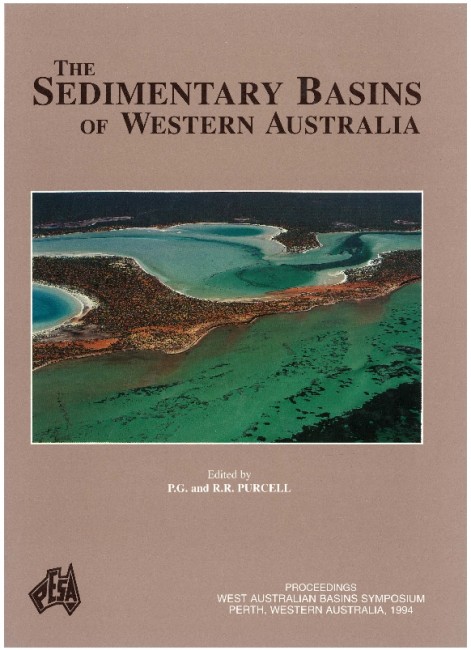Publication Name: The Sedimentary Basins of WA
Authors: P. Quaife, J. Rosser and S. Pagnozzi
Publication Volume: 1
Date Published: July 1994
Number of Pages: 23
Reference Type: Book Section
Abstract:
The offshore northern Perth Basin is part of an extensive system of genetically -linked structural terrains which record the progressive rifting and Early Cretaceous breakup of the Australian and Greater Indian plates. At least two significant periods of rifting have been recognised: a Late Permian event which resulted in the development of north-trending, intra-cratonic half grabens; and a Late Triassic to Early Cretaceous rift episode which culminated in the seafloor spreading due west of the Vlaming Sub-basin to the south and associated regional uplift of the offshore northern Perth Basin.A seismic- and sequence-stratigraphic study was undertaken, incorporating regional well and seismic data. Five megasequences related to the Late Permian and Late Triassic to Early Cretaceous rift episodes have been defined; Pre-rift I (pre-Late Permian), Syn-rift I (Late Permian), Post-rift I (Late Permian to Late Triassic), Syn-rift II (Late Triassic to Early Cretaceous) and Post-rift II (Early Cretaceous to Present Day). Each megasequence comprises a number of discrete depositional sequences.
This study reveals the complex structural and stratigraphic evolution of the area and provides a tectonostratigraphic framework which may be applied to other parts of the onshore and offshore Perth Basin.
The early Palaeozoic age of the Edel Province and the complex thrusted nature of the underlying Proterozoic
basement are demonstrated. Improvements in seismic data quality have allowed recognition of a Syn-rift I, Late
Permian section previously considered absent in this area. The structural complexity of the Late Triassic to Early
Cretaceous rifting is illustrated by zones of northwest-trending extensional faults and localised areas
of extreme uplift and subsequent erosion. The overlying Post-rift II Megasequence records the initial deformation
and regional tilt of the margin, and the associated Cretaceous lowstand development.


